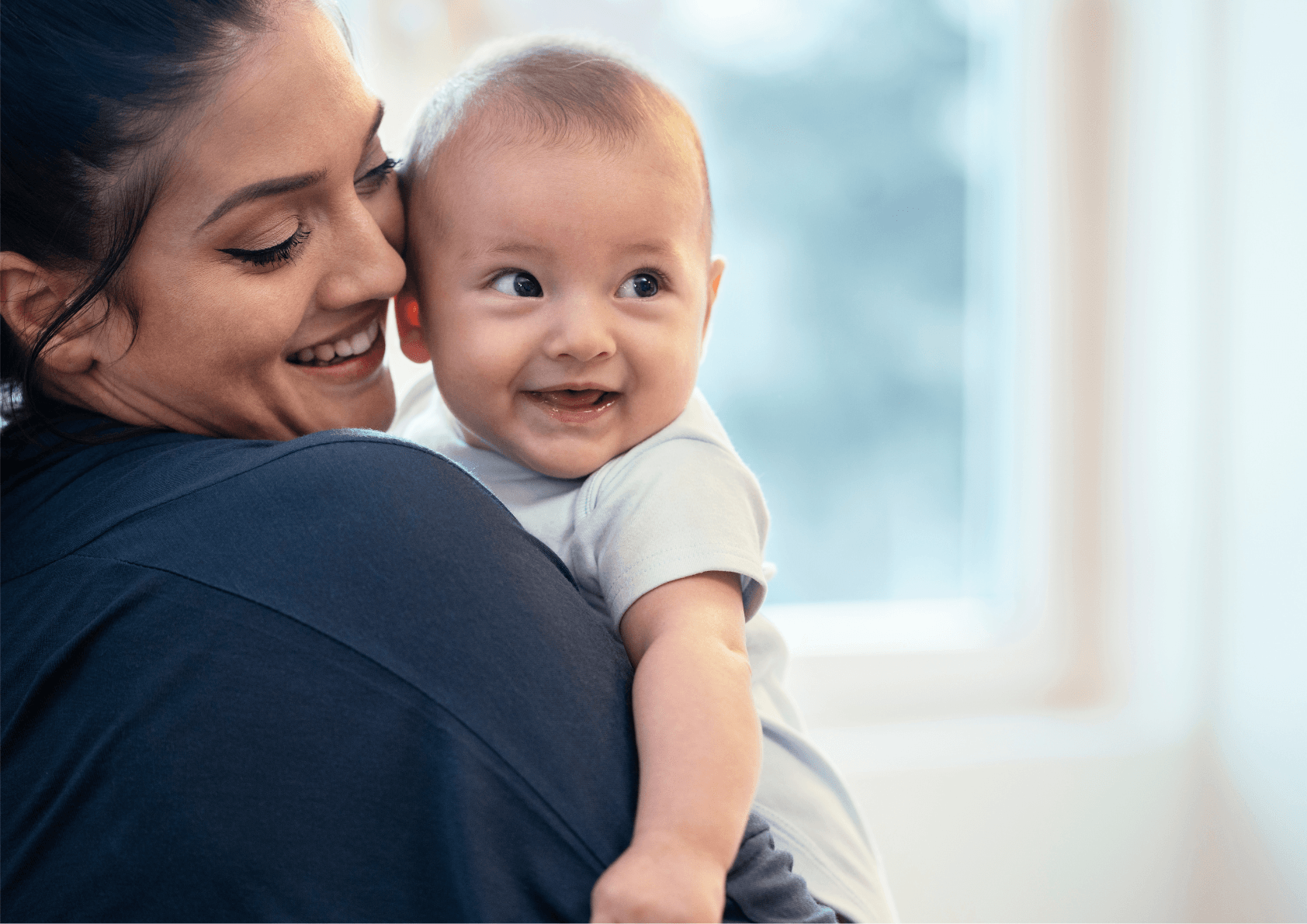What Are KIT Days?

Maternity leave can be a whirlwind of emotions - cuddles, feeding, sleepless nights - and even though you think you have a lovely long time off, that time sure does fly by! Before you know it, you need to start thinking about returning to work, and for many people, this can feel pretty daunting.
Luckily, we’ve seen a big rise in Keeping in Touch (KIT) days, which are a flexible way for women on maternity leave to, quite literally, keep in touch with their workplace - without needing to give up their statutory or maternity pay. KIT days are also known as 'keeping in touch days' or 'touch days' in some workplace policies.
For mums who have been out of the workplace for weeks or months, KIT days are a great way to make returning to work feel much less overwhelming. By popping into the office for a training day here or there, attending meetings, or joining a team meeting to stay in the loop, you’re more likely to return with confidence and a clearer sense of what’s changed.
A keeping in touch day is any day where an employee on maternity leave undertakes a work related activity, such as attending meetings or training, by mutual agreement with their employer. Only work related activity qualifies as a KIT day, purely social events or informal visits do not count as a KIT day.
In this guide, we’ll explore everything you need to know about KIT days: what they are, how many you can take, how they work in practice, and how to make the most of them.
How Do KIT Days Work?

Keeping in Touch (KIT) days are optional workdays that parents on maternity, adoption, or shared parental leave can agree to work without losing their entitlement to pay or benefits. These are voluntary arrangements between the employee and employer. In the UK, an employee takes up to ten days during their statutory maternity leave or adoption leave, and working more than ten days may affect statutory leave and pay. Employees on maternity leave, including pregnant women and employees on maternity, are eligible for KIT days, and self employed individuals have different rules regarding self employed work.
These days are designed to allow mums to:
- Stay up to date with developments at work
- Attend training sessions or key team meetings
- Ease the eventual return to the workplace, including a phased return over five weeks
- Maintain professional relationships and confidence
KIT days can involve anything work-related - from shadowing a colleague to attending a full-day training event. Any time an employee works, whether a full day, half day, or just a few hours worked, it counts as a KIT day, and normal hours or shift patterns may be agreed upon. The important thing to remember is that they’re completely voluntary - you don’t have to do them, and your employer can’t insist on them either. Voluntary arrangements can be made if an employee faces childcare difficulties. Reasonable contact should be maintained, and employees should not be treated unfairly, face unfair treatment, or risk unfair dismissal for refusing KIT days. Factory workers have a compulsory maternity leave of four weeks, and KIT days cannot be used during this period. KIT days can be taken during paid leave or unpaid leave, and the maternity pay period, average weekly earnings, and statutory maternity leave rules apply. Most employers and many employers pay normal pay or contractual pay for KIT days, and kit day pay should reflect the hours worked and be agreed in advance. Different employers may have different policies, and a managing director or senior staff may also use KIT days. If an employee starts a new job or works for different employers during the ma period, this may affect their ma claim. KIT days can help with a phased return, and employees have the right to return to the same job, old job, or a suitable alternative job after their leave.
Eligibility for KIT Days
Not everyone on leave is automatically eligible for Keeping in Touch (KIT) days, so it’s important to know where you stand. KIT days are available to employees who are on maternity or adoption leave and have a valid employment contract in place. To qualify, you must be receiving Statutory Maternity Pay (SMP) or Statutory Adoption Pay (SAP) during your maternity or adoption leave period.
If you’re taking shared parental leave, you can also access similar days called Shared Parental Leave in Touch (SPLIT) days, which work in much the same way. The key is that both the employer and the employee must agree to any KIT days in advance—there’s no obligation on either side to offer or accept them.
You can use up to ten KIT days during your maternity or adoption leave period without affecting your statutory maternity pay or statutory adoption pay. If you’ve already used your ten kit days, you won’t be able to take more without it impacting your maternity pay or leave. Always check your employment contract and discuss your plans with your employer to make sure you’re both on the same page.
How Many KIT Days Can You Use (Up to Ten Days)?

You can work a kit or work up to ten days during your maternity leave without affecting your statutory pay or ending your leave. Working a kit day does not end your leave, but if you work more than ten days, you may lose your maternity benefits for the week in which you do extra work.
It’s worth noting that part-days count as a full KIT day—so whether you work a half day, attend a one-hour meeting, or work a full shift, any hours worked by the employee works as a full KIT day. If you work more than ten days, you may lose your entitlement to Maternity Allowance or statutory benefits.
Any time an employee works, whether attending a meeting, training, or working a shift, it counts as a KIT day.
If you’re also planning on taking Shared Parental Leave (SPL), you may be eligible for an additional 20 workdays known as Shared Parental Leave In Touch (SPLIT) days, which follow a similar structure.
When Can You Start Using KIT Days During Maternity Leave?

You can start using KIT days any time after the first two weeks following birth (this is the compulsory maternity leave period). The first two weeks after childbirth are known as compulsory maternity leave immediately, during which no work is permitted by law. However, most mums prefer to wait until things feel a little more settled, often around 3 to 6 months postpartum, or even later.
You and your employer should agree in advance:
- When the KIT days will happen
- What kind of work you’ll be doing
- How much you’ll be paid
I’d definitely recommend having these conversations early, even before your leave begins, so both you and your employer know what to expect and can plan accordingly.
What Can You Do on a KIT Day?(KIT Day Activities)
Do You Get Kit Day Pay for KIT Days?
Yes, KIT days are paid! But there’s no set amount, so how much you get depends on what you agree with your employer. KIT day pay should be agreed in advance and should reflect the employee's normal pay or contractual pay. Employer paying for KIT days should ensure compliance with statutory maternity leave regulations, and pay should be at least the national minimum wage. Pay for KIT days may be offset against statutory maternity pay, and average weekly earnings during the maternity pay period may be used to calculate entitlements.
Here are some common arrangements:
- You may be paid your usual daily rate
- You might be paid your Statutory Maternity Pay (SMP) plus a top-up
- Your employer may offer a flat rate per KIT day, based on internal policy
To avoid surprises, always check the pay structure with your HR or payroll department before working any KIT days.
Why Use KIT Days?
1. Boosting Confidence
I don’t know about you, but I felt like a totally different person after I had my first baby and “working Lizz” felt like a distant memory by the end of those nine months. Having regular KIT days can help you stay connected to your professional self, which in turn can make returning to work far less daunting.
2. Reducing Return-to-Work Anxiety
That first full day back can feel overwhelming. You might not remember where anything is, who’s still in your team, or what’s changed since you left. But a few KIT days ahead of your return can ease that mental load and bring back some of your workplace muscle memory.
3. Staying in the Loop
Whether it's new hires, new systems, or a reshuffle of responsibilities, things move fast. KIT days keep you updated and involved so that your eventual return doesn't feel like starting from scratch.
4. Building Bridges
Maintaining a sense of connection with your team can really support your mental health. While some mums adore being at home, others may crave adult conversation, their own identity, and a space where they can just be themselves. KIT days are a great way to keep that door open.
5. Practical Planning
If you’re commuting, doing a nursery drop-off, or even pumping during work hours, there’s a lot to figure out. If you experience childcare difficulties, you can discuss flexible arrangements for KIT days with your employer. KIT days let you test the waters without committing fully, so you can fine-tune your routine before you’re back for good.
Planning Your KIT Days: What to Consider
1. Timing
There’s no perfect time to start using your KIT days just whatever works for you and your baby. Many mums wait until their little ones are three months or older, but it all depends on how you’re feeling. One tip: try to wait until you’ve got a bit of a feeding or nap routine in place so you can better judge when you’re free.
2. Childcare
You might already have childcare planned for your return to work, and KIT days are the perfect way to trial it. Whether you’re using grandparents, a nursery, or a childminder, use KIT days to test drop-offs, naps, and pick-up routines and see how your little one settles.
3. Purpose
Think about what you want to get out of each KIT day. Would it be helpful to attend a training day? Catch up with clients? Reconnect with your manager? Sit down and chat with your employer to find the best use of your time.
4. Communication
Be honest and realistic about what you can manage. You might have a very different idea of what’s doable before baby arrives compared to after. If something feels like too much, that’s okay just let your employer know and keep things flexible.
Final Thoughts on Keeping in touch KIT days
KIT days are a brilliant tool for bridging the gap between home and working life after maternity leave. They're designed to support, not disrupt, your time with your baby, and can be incredibly helpful for mums who want to stay connected to their careers.
Every mum’s return-to-work journey looks different. Whether you use all 10 KIT days or none at all, what matters most is doing what feels right for you and your family.
For more parenting tips, ideas, and honest mum-to-mum advice on everything from maternity leave to the messy middle of motherhood, pop over to www.theparentingdaily.co.uk - we’d love to have you!

